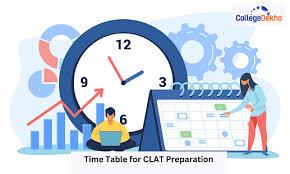Intro
As a university, having an effective email marketing strategy is key to engaging your target audience. When it comes to measuring success, the right metrics can help you understand how your emails are performing and what changes need to be made. In this blog post, we’ll look at the key email marketing metrics that matter for your University Email List and how you can use them to optimize your campaigns.
Why Tracking Email Marketing Metrics is Important for Universities
Tracking email marketing metrics is crucial for universities because it provides valuable insights into the effectiveness of their email campaigns. By monitoring metrics such as open rates, click-through rates, conversion rates, bounce rates, list growth rate, unsubscribe rates, and subject line analysis, universities can understand how well they are engaging their target audience and make necessary improvements. These metrics help universities optimize their email marketing strategy, tailor their content to better resonate with recipients, and ultimately drive higher engagement and conversions. With a university mailing list, tracking email marketing metrics ensures that universities can effectively communicate with their audience and achieve their marketing goals.
Open Rates: Understanding How Many People Are Reading Your Emails
Open rates are a critical metric to measure the success of your email marketing campaigns for your university mailing list. They indicate the percentage of recipients who actually open and read your emails. By tracking open rates, you can gauge how well your subject lines and overall email content resonate with your audience. A high open rate suggests that your emails are capturing attention and generating interest, while a low open rate may indicate that your emails are being ignored or going unnoticed. Monitoring open rates allows you to make data-driven decisions to improve your email engagement and ultimately drive better results for your university.
Click-Through Rates: Determining How Effective Your Call-to-Action is
Click-through rates (CTRs) are a crucial email marketing metric for your university mailing list. CTRs show how many recipients are actually clicking on the links or buttons in your emails to take the desired action. It is an important indicator of the effectiveness of your call-to-action (CTA) and the overall engagement of your audience. By tracking CTRs, you can identify which CTAs are resonating with your recipients and which ones may need improvement. This data-driven insight allows you to optimize your emails, leading to higher engagement and increased conversions. Don’t underestimate the power of a compelling CTA in driving the desired actions from your university email recipients.
Conversion Rates: Analyzing How Many Recipients are Taking Action
Conversion rates are an important metric to analyze in your email marketing campaigns for your university email list. They give you insights into how many recipients are actually taking action based on your emails. Whether it’s signing up for an event, applying for a program, or donating to a cause, conversion rates show you the effectiveness of your email content and the impact it has on your audience. By analyzing conversion rates, you can make data-driven decisions to optimize your emails and increase the number of recipients who take action, ultimately driving the success of your university marketing efforts.
Bounce Rates: Recognizing How Many Emails Are Undeliverable
Bounce rates are an important email marketing metric for universities to track. They indicate the percentage of emails that were undeliverable to recipients’ inboxes. A high bounce rate may be a sign of outdated or incorrect email addresses, technical issues, or spam filters. By recognizing and monitoring bounce rates, universities can identify and address any issues with their email delivery, ensuring that their messages reach their intended audience. By reducing bounce rates, universities can improve the effectiveness of their email marketing campaigns and maximize their communication with students, alumni, and other stakeholders.
List Growth Rate: Evaluating the Effectiveness of Your Lead Generation Efforts
List growth rate is a crucial email marketing metric that universities should pay attention to. It measures how quickly your email list is growing over time, indicating the effectiveness of your lead generation efforts. A higher list growth rate suggests that your university’s email marketing strategy is resonating with your target audience, attracting new subscribers, and expanding your reach. On the other hand, a stagnant or low growth rate may indicate that your lead generation efforts need improvement. By evaluating your list growth rate, you can make informed decisions to optimize your lead generation tactics and continuously grow your university’s email list.
Unsubscribe Rates: Finding Out How Many Subscribers are Opting Out
Unsubscribe rates are a crucial metric to track for your university email list. They provide insight into how many subscribers are choosing to opt out of receiving your emails. While it can be disheartening to see people unsubscribe, it’s important to understand why they’re doing so. By analyzing unsubscribe rates, you can identify any patterns or trends that may be contributing to high opt-out numbers. This information allows you to make necessary adjustments to your email marketing strategy and content, ensuring that you’re providing value and keeping your subscribers engaged.
Subject Line Analysis: Assessing Which Subject Lines are Most Effective
Subject line analysis is a crucial aspect of email marketing for universities. It allows you to assess which subject lines are most effective in capturing the attention of your recipients and enticing them to open your emails. By analyzing subject line performance, you can identify trends, patterns, and keywords that resonate well with your audience. This insight enables you to refine your subject lines and create compelling email content that generates higher open rates and engagement. Remember, the subject line is the first impression your recipients have of your email, so optimizing it is essential for driving the success of your university email campaigns.
Conclusion
In conclusion, tracking email marketing metrics is essential for universities to optimize their campaigns and engage their target audience effectively. By analyzing open rates, click-through rates, conversion rates, bounce rates, list growth rate, unsubscribe rates, and subject line analysis, universities can make data-driven decisions to improve their email engagement and drive higher conversions. These metrics provide valuable insights into the effectiveness of email marketing strategies, allowing universities to tailor their content and communicate effectively with their audience. By continuously monitoring and optimizing these metrics, universities can achieve their marketing goals and drive the success of their email campaigns.







3 Comments
I love your writing style really enjoying this website .
Its such as you read my thoughts! You appear to grasp so much approximately this, such as you wrote the book in it or something. I think that you simply can do with some to power the message home a bit, but other than that, this is wonderful blog. A fantastic read. I’ll definitely be back.
hello!,I really like your writing so so much! proportion we be in contact extra approximately your article on AOL? I require an expert on this house to solve my problem. Maybe that is you! Having a look ahead to see you.